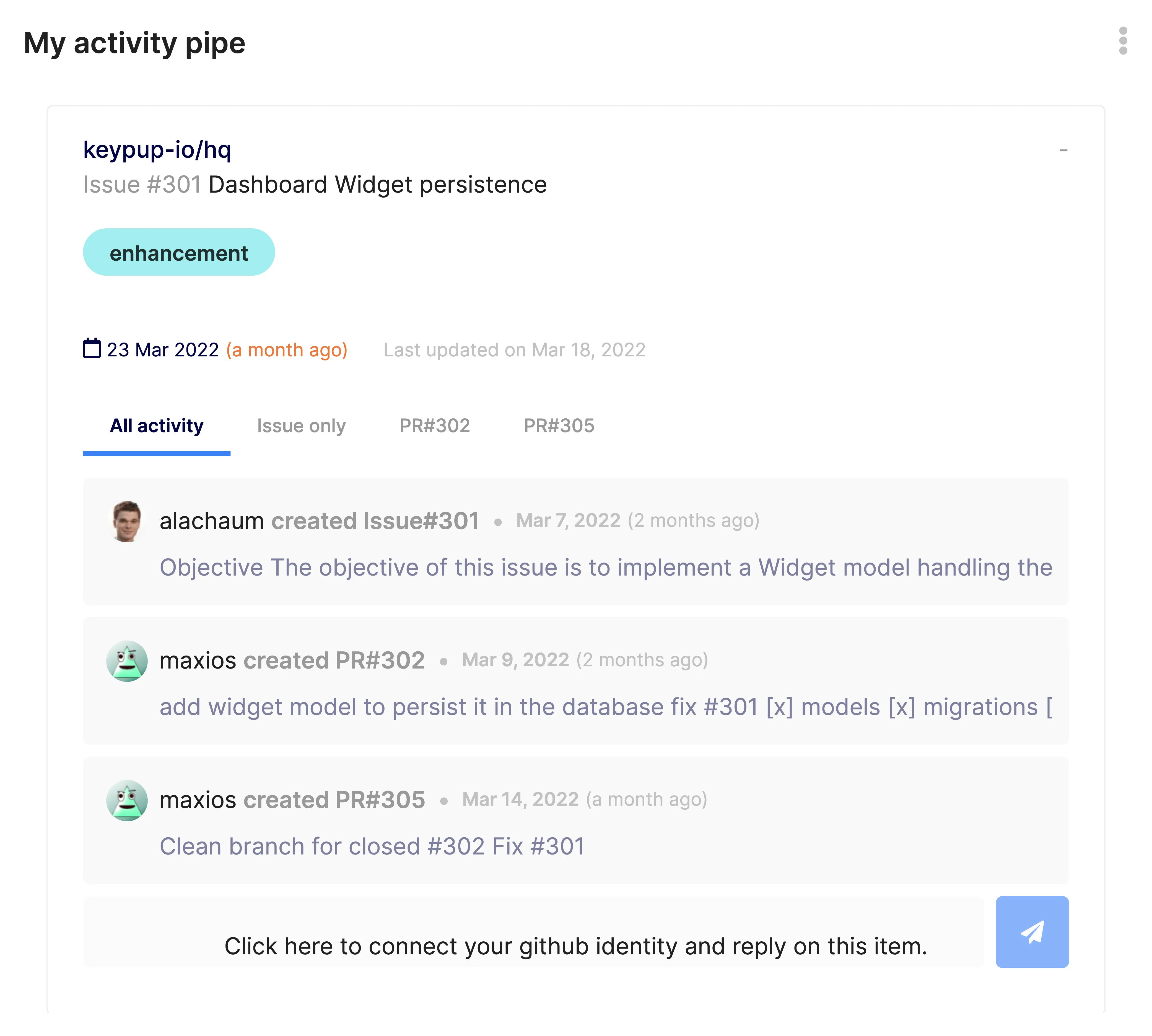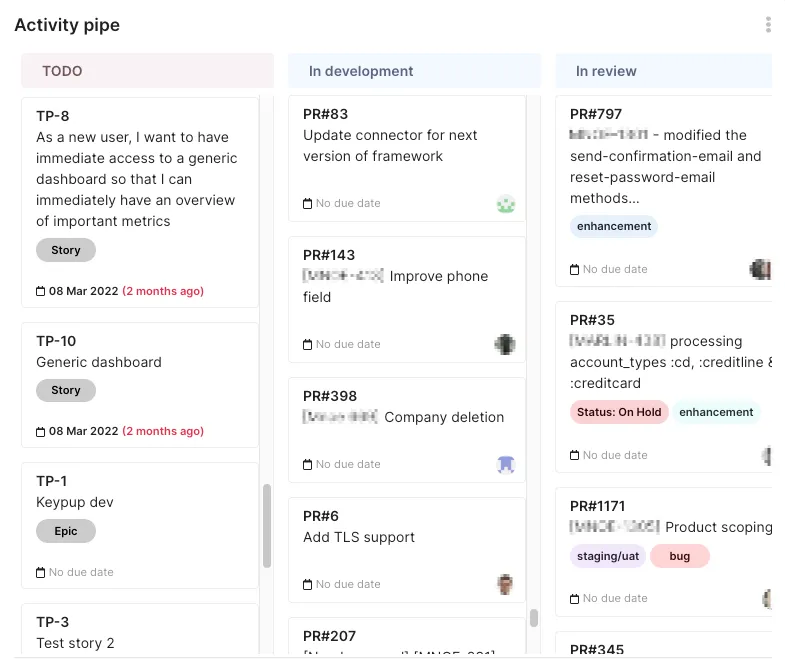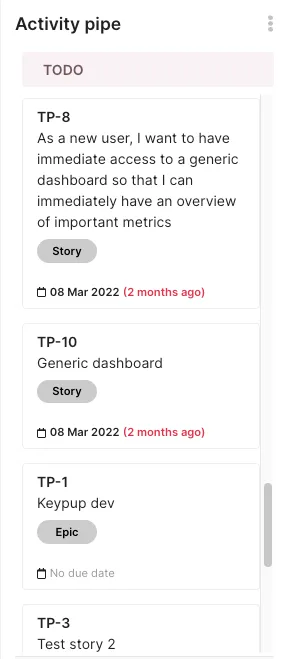Activity Pipe
Monitor your software development lifecycle progress with the dynamic agile board combining cards from your git(s) and project management tool(s).
Get a Dynamic Agile Board View from Your Gits and PM Tools
with the
Activity Pipe
Monitor your software development lifecycle progress with the dynamic agile board combining cards from your git(s) and project management tool(s).



From startups to large enterprises, Keypup serves all the unique complexities related to project size, structure and teams, including:



.webp)
.webp)

.webp)








%20(1).webp)
.webp)




.webp)

.webp)

%20logo.webp)








.webp)




















.webp)








%20(1).webp)
.webp)




.webp)

.webp)

%20logo.webp)








.webp)



















Understand the Activity Pipe Board
Instead of traditional agile boards like Jira or Trello, the activity pipe board uses dynamic filters and updates itself automatically as issues and pull requests progress. Pre-configured activity pipe boards follow a common developer-oriented flow. Implementing issues requires a pull request. An issue disappears from the "Todo" column as soon as a pull request relates to it, and the pull request appears in the "In development" section. When a pull request gets a reviewer assigned, it will move from the “in development” column to the in review column.
Prior to merging, pull requests must have green builds and enough approvals to move from the in review column to the “mergeable” column. Items are marked as complete based on their implementation status: Recently closed issues and pull requests will appear in the “done” column. In addition, any open issue with related pull requests merged will appear in the “done” column (“Resolution state = Implemented ”).
How to Use the Activity Pipe Board
The purpose of this board is not to replace your standard agile board (e.g., Jira, Trello). Instead of using it for tracking issues, it should be used as a tool for tracking pull requests based on their contextual status.
You can fully customize the activity pipe board. For example, columns can be added and removed (up to 10) and filters can be edited. If you want to list all open pull requests that haven't been updated in the last three days, you can add a column called “in development” (stuck) next to “in development”. You may then edit the “in development” column to exclude pull requests that have not been updated in the last three days. This approach will allow you to immediately see which pull requests need your attention.
Looking to Monitor Your Own Activity Pipe?
As a software engineer, you may want to track this metric at an individual level to keep track of your own activities. This version of the template comes with a filter automatically applied to allow you to monitor your own Activity Pipe.







